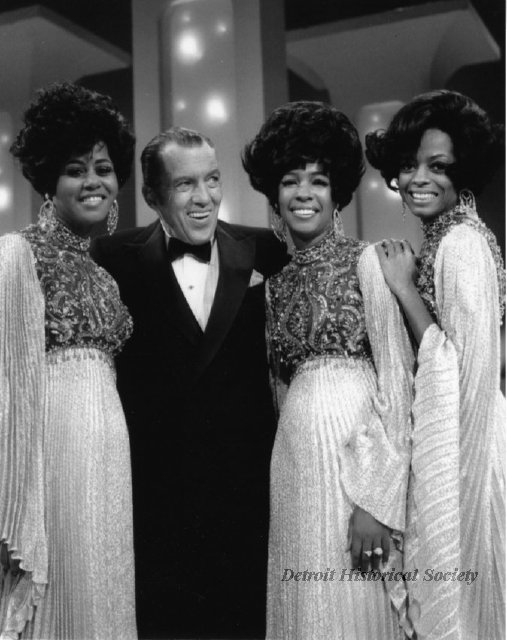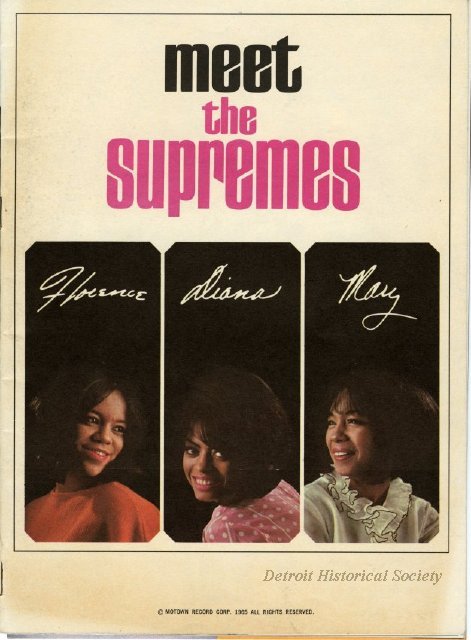Encyclopedia Of Detroit
Supremes, The
The Supremes were the all-female singing group that was the leading act of Motown Records during the 1960s. Originating in Detroit, Michigan in 1959 as the Primettes, the group was originally conceived as a sister act to the Primes, forerunner to the Temptations, by future Temptations member Paul Williams. The original members of the Primettes, all from the Brewster-Douglass public housing project in Detroit, were Florence Ballard, Mary Wilson, Diana Ross, and Betty McGlown.
In 1960 McGlown was replaced by Barbara Martin, and the group, with Smokey Robinson’s help, got an audition with Motown Records. Motown founder Berry Gordy made them wait until they finished high school, then signed the four Primettes to a Motown contract in 1961, changing the name to the Supremes. Martin left the group in early 1962, and Ballard, Wilson, and Ross carried the Supremes forward as the soon-to-be-famous trio. Their first number one hit was “Where Did Our Love Go” in 1964.
In 1967 Gordy made Ross the lead singer of the group; Ballard was replaced by Cindy Birdsong. That same year, the group’s name changed to Diana Ross and the Supremes highlighting Ross’s role as the lead singer. Some of their greatest hits were “Baby Love” (1964), “Stop in the Name of Love” (1965), and “Can’t Hurry Love” (1966). The Supremes recorded 10 number one hit singles between August 1964 and May 1967.
Singing a range of musical styles from doo-wop, pop, and soul, to Broadway show tunes, psychedelic soul, and disco, the Supremes achieved mainstream success during the mid-1960s. A large part of their success was due to Motown’s legendary songwriting team of Holland-Dozier-Holland. Motown choreographer Cholly Atkins contributed the smooth moves, including hand gestures, that gave the group their style. Ross left the group in 1970 to pursue a solo career and was replaced by Jean Terrell. The lineup of the Supremeschanged frequently after 1972, and the group eventually disbanded in 1977 after an 18-year run.
The Supremes were the first Black female performers of their generation to embrace a more feminine image, appearing on stage in detailed makeup and high-fashion gowns and wigs. They were extremely popular both domestically and abroad, appearing regularly on television programs such as Hullabaloo, Hollywood Palace, The Della Reese Show, and most notably, The Ed Sullivan Show, on which they made 16 appearances. In 1983, the Supremes trio returned to perform one song together for the TV special “Motown 25: Yesterday, Today, and Forever.” When Ross proposed a 2000 reunion tour the idea was rejected by Wilson and Birdsong because of contract inequities. Two other singers replaced them and the tour was a flop.
As the most commercially successful of the Motown acts and America’s most successful vocal group to date, the Supremes achieved 12 number one singles on the Billboard Hot 100 list, and their worldwide popularity almost matched that of the Beatles at their peak in the mid-1960s. Ultimately, the accomplishments of the Supremes helped to pave the way for future African American musicians to find mainstream success.



